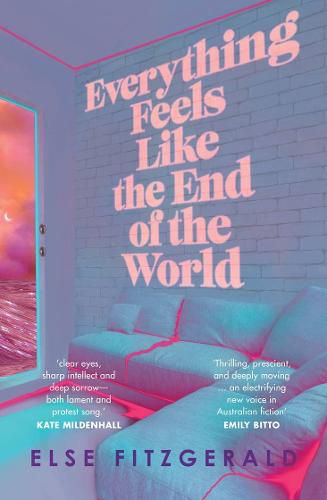Paperback, 264 pages
en-Latn-AU language
Published Jan. 1, 2022 by Allen & Unwin.

Paperback, 264 pages
en-Latn-AU language
Published Jan. 1, 2022 by Allen & Unwin.
Everything Feels Like the End of the World is a collection of short speculative fiction exploring possible futures in an Australia not so different from our present day to one thousands of years into an unrecognisable future.
Each story is anchored, at its heart, in what it means to be human: grief, loss, pain and love. A young woman is faced with a difficult choice about her pregnancy in a community ravaged by doubt. An engineer working on a solar shield protecting the Earth shares memories of their lover with an AI companion. Two archivists must decide what is worth saving when the world is flooded by rising sea levels. In a heavily policed state that preferences the human and punishes the different, a mother gives herself up to save her transgenic child.
These transformative stories are both epic and granular, and forever astonishing in their imaginative detail, sense of …
Everything Feels Like the End of the World is a collection of short speculative fiction exploring possible futures in an Australia not so different from our present day to one thousands of years into an unrecognisable future.
Each story is anchored, at its heart, in what it means to be human: grief, loss, pain and love. A young woman is faced with a difficult choice about her pregnancy in a community ravaged by doubt. An engineer working on a solar shield protecting the Earth shares memories of their lover with an AI companion. Two archivists must decide what is worth saving when the world is flooded by rising sea levels. In a heavily policed state that preferences the human and punishes the different, a mother gives herself up to save her transgenic child.
These transformative stories are both epic and granular, and forever astonishing in their imaginative detail, sense of revelation and emotional connection. They herald the arrival of a stunning new voice.